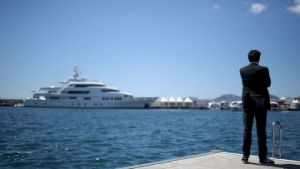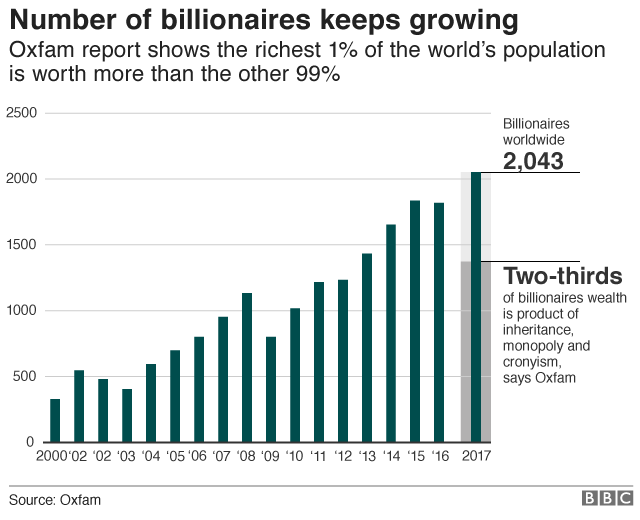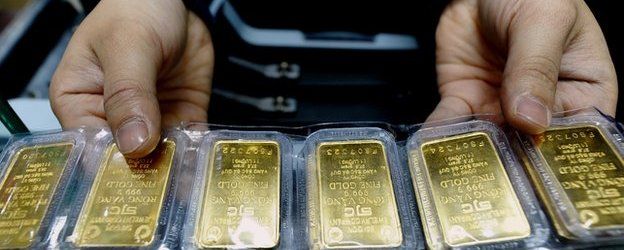
On January 22, 2018, Katie Hope writes on BBC News:
The gap between the super rich and the rest of the world widened last year as wealth continued to be owned by a small minority, Oxfam has claimed.
Some 82% of money generated last year went to the richest 1% of the global population while the poorest half saw no increase at all, the charity said.
Oxfam said its figures – which critics have queried – showed a failing system.
It blamed tax evasion, firms’ influence on policy, erosion of workers’ rights, and cost cutting for the widening gap.
Oxfam has produced similar reports for the past five years. In 2017 it calculated that the world’s eight richest individuals had as much wealth as the poorest half of the world.
This year, it said 42 people now had as much wealth as the poorest half, but it revised last year’s figure to 61. Oxfam said the revision was due to improved data and said the trend of “widening inequality” remained.

‘Unacceptable’
Oxfam chief executive Mark Goldring said its constant readjustment of the figures reflected the fact that the report was based “on the best data available at the time”.
“However you look at it, this is an unacceptable level of inequality,” he said.
Oxfam’s report coincides with the start of the World Economic Forum in Davos, a Swiss ski resort. The annual conference attracts many of the world’s top political and business leaders.
Inequality typically features high on the agenda, but Mr Goldring said that too often “tough talk fades away at the first resistance”.

Analysis by Anthony Reuben, BBC Reality Check
It’s really hard working out how much wealth the super-rich and the very poor have.
The super-rich tend not to publicise their worth and many of the world’s poorest countries keep poor statistics.
To illustrate that, this time last year, Oxfam told us that eight individuals have as much wealth as the poorest half of the world’s population. Now it has revised that figure to 61 people for last year, falling to 42 people this year – that’s a pretty big revision.
And there are other caveats around the data on which all this is based, such as that the people on the list with the lowest wealth are not necessarily poor at all – they may be highly qualified professionals with large amounts of student debt, for example, or people with high incomes but enormous mortgages.
But whether it’s eight people, 42 people or 61 people who have the same wealth as half of the world, there is still great wealth inequality around the world, which is the message Oxfam is taking to Davos.
The charity is urging a rethink of business models, arguing their focus on maximising shareholder returns over broader social impact is wrong.
It said there was “huge support” for action with two thirds (72%) of 70,000 people it surveyed in ten countries saying they wanted their governments to “urgently address the income gap between rich and poor”.
But Mark Littlewood, director general at free market think tank The Institute of Economic Affairs, said Oxfam was becoming “obsessed with the rich rather than the poor”.
“Higher taxes and redistribution will do nothing to help the poor; wealth is not a fixed pie. Richer people are also highly taxed people – reducing their wealth won’t lead to redistribution, it will destroy it to the benefit of no one,” he added.
It was a criticism echoed by Sam Dumitriu, head of research at another free market think tank – the Adam Smith Institute – who said the charity’s inequality stats “always paint the wrong picture”.
“In reality, global inequality has fallen massively over the past few decades.
“As China, India and Vietnam embraced neoliberal reforms that enforce property rights, reduce regulations and increase competition, the world’s poorest have received a massive pay rise leading to a more equal global income distribution.”
 Image copyrightAFP
Image copyrightAFPHow does Oxfam work out the figures?
Oxfam’s report is based on data from Forbes and the annual Credit Suisse Global Wealth databook, which gives the distribution of global wealth going back to 2000.
The survey uses the value of an individual’s assets, mainly property and land, minus debts, to determine what he or she “owns”. The data excludes wages or income.
The methodology has been criticised as it means that a student with high debts, but with high future earning potential, for example, would be considered poor under the criteria used.
But Oxfam said even if the wealth of the poorest half of the world was recalculated to exclude people in net debt their combined wealth was still equal to that of just 128 billionaires.
http://www.bbc.com/news/business-42745853
http://www.newsweek.com/billionaires-money-end-poverty-report-786675
Gary Reber Comments:
I gotta wonder whether the people writing the report even understand “wealth OWNED by a small minority.” Although the report does state: “The survey uses the value of an individual’s assets, mainly property and land, minus debts, to determine what he or she ‘owns’. The data excludes wages or income.”
So it does boil down to how much OWNERSHIP of wealth-creating, income-producing capital assets one has that determines their level of wealth.
Study after study studies the poor, which boils down to the poor do not OWN productive capital assets. Instead, logically should be study the rich and determine why they are rich. If we did, the reality would be that they OWN productive capital.
In our pre-industrial society, labor was the principal factor in the creation of wealth and there was far, far less economic inequality. In today’s world that is no longer the case, as the human input is exponentially being replaced by the non-human factor –– productive physical capital.
What needs to be understood is that fundamentally, economic value is created through human and non-human contributions.
The role of physical productive capital is to do ever more of the work efficiently, which produces wealth and thus income to those who OWN productive capital assets. As such, “capital” can be defined as productive assets, including job-displacing physical and informational technologies, structures, land and other natural resources, patents and copyrights — or non-human “things” (property) contributing to the production of marketable goods, products, and services.
People invented “tools” to reduce toil, enable otherwise impossible production, create new highly automated industries, and significantly change the way in which products and services are produced from labor intensive to capital intensive — the core function of technological invention and innovation. Most changes in the productive capacity of the world since the beginning of the Industrial Revolution can be attributed to technological improvements in our capital assets, and a relatively diminishing proportion to human labor. Capital does not “enhance” labor productivity (labor’s ability to produce economic goods). In fact, the opposite is true. It makes many forms of labor unnecessary.
The fact is, productive capital is increasingly the source of the world’s economic growth and, therefore, should become the source of added property ownership incomes for all. If both labor and capital are independent factors of production, and if capital’s proportionate contributions are increasing relative to that of labor, then equality of opportunity and economic justice demands that the right to property (and access to the means of acquiring and possessing property) must in justice be extended to all. Yet, sadly, this is virtually never addressed in study after study or report after report. Instead, the solution involve redistributing the wealth of those who now OWN to those who do not OWN, without diminishing their wealth, but through means of taxation to generate revenue to support government-controlled “welfare” programs, wether government “make-work” job creation, social services or guaranteed annual income.
What is missing is a discussion of how to empower EVERY American child, woman, and man to acquire personal OWNERSHIP of productive capital assets to be formed in the future, without taking anything away from those who already own. This can be accomplished using insured, interest-free capital credit, repayable out of the future earnings in the investments of our future.
Conventionally, most people do not have the right to acquire productive capital with the self-financing earnings of capital; they are left to acquire, as best as they can, with their earnings as labor workers and the pledge of past savings as loan collateral. This is fundamentally hard to do and limiting. Thus, the most important economic right Americans need and should demand is the effective right to acquire capital with the earnings of capital.
Solutions that broaden capital OWNERSHIP simultaneously with the growth of the economy involve the following system reforms:
Support Monetary Justice at http://capitalhomestead.org/page/monetary-justice.
Support the Capital Homestead Act (aka Economic Democracy Act and Economic Empowerment Act) at http://www.cesj.org/learn/capital-homesteading/, http://www.cesj.org/learn/capital-homesteading/capital-homestead-act-a-plan-for-getting-ownership-income-and-power-to-every-citizen/, http://www.cesj.org/learn/capital-homesteading/capital-homestead-act-summary/ and http://www.cesj.org/learn/capital-homesteading/ch-vehicles/.

